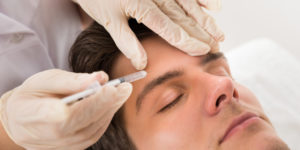What is Botox and how does it work?
The science bit
Botox is a purified form of Botulinum Toxin Type A (BTX-A), which when used for cosmetic purposes, reduces expression lines like wrinkles, frown lines and crows feet around the eyes, giving you a more smooth, youthful look.
It works by affecting the nerve endings that make the muscles contract. It is a non-invasive treatment that is increasingly being used as an alternative to invasive procedures such as facelifts.
Non-cosmetic uses
Botox has been used for years to treat facial spasms and muscular disorders in adults, such as uncontrollable blinking and lazy eyes. It is also used to treat excessive sweating from the armpits in adults by paralysing the muscles that cause it.
Botox treatments

Several small injections are made to the treatment area by a doctor, cosmetic dentist or other trained professional.
The injections are relatively painless and you don’t require an anaesthetic, so you can resume your normal daily activities after the treatment and will be able to drive.
A session normally only lasts about ten minutes, so you could even have it done in your lunch break, and costs around £200.
You will begin to see the results within 3-5 days, but the effects wear off over time so you will need to go back for further treatments about every four months.
Is it safe?

Despite claims that Botox is completely harmless, some experts are concerned because the long term effects if its use are still unknown.
You shouldn’t use Botox if you are pregnant, have any kind of neurological disorder, or if you are allergic to any of the ingredients.
You should of course also ensure that you should only have the treatment done by a fully qualified professional and beware of clinics offering extremely cheap treatments and special offers, as they may be using a substandard product.
It is a good idea to check out a clinic’s credentials and reputation before you put your looks in their hands.
Possible side effects
Botox treatments can sometimes cause headaches, nausea, temporary blurred vision, redness around the treatment area, facial pain and flu-like symptoms. In very rare cases (less than 1%), it could also cause the eyelids to droop.
Why is Botox becoming so popular?

Botox is the fastest growing cosmetic treatment in the UK and is especially popular amongst women.
It is also incredibly popular with celebrities striving to cling on to their youthful looks and the debate over who’s had it done and who hasn’t has become a hot topic in the tabloids and celebrity magazines.
It isn’t just a phenomenon that affects celebrities or the older generation, however. Even wrinkle-free women in their early twenties are having regular Botox treatments, perhaps in an attempt to emulate the airbrushed images of idealised beauty that bombard us from the pages of glossy magazines.
Botox is becoming increasingly appealing because it a temporary, quick-fix treatment that allows people to look more fresh faced and youthful without enduring the pain, expense, potential risks and lengthy recovery time of invasive surgery.


